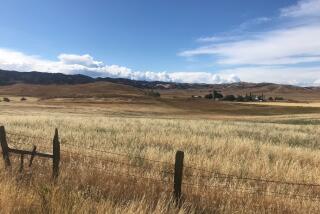Addition to Water Park Is Opposed
A proposed $1-million water park expansion at Lake Casitas could endanger wildlife and contribute to traffic congestion at the popular reservoir near Ojai, environmentalists said Thursday.
The Casitas Municipal Water District wants to build a waterway, called Lazy River, near an existing one-acre children’s water playground at the entrance to the lake, which is off-limits to swimmers.
“This concrete channel would wind around the kids’ water park and attract even more visitors and vehicles to the crowded roads of Ojai,” said Jack Gillooly, a director of the Ventura Audubon Society.
He was among about two dozen people who attended a public hearing on the proposal Wednesday night. The session was sponsored by the water district, which manages the lake for the federal government.
While responsible for providing clean water to towns and orchards in the Ojai Valley, the water agency is also charged with promoting recreational activities for the 750,000 visitors who flock to the lake each year.
Gillooly and other critics said the area’s popularity among local residents and tourists is creating dirty air and contributing to gridlock on two-lane California 33, which connects to Ventura, 13 miles to the south. Environmentalists also expressed concern about night lights and the project’s effect on wildlife and water quality. The water district’s board of directors seemed receptive, said John Buse, a Ventura attorney for the Environmental Defense Center in Santa Barbara. “It’s not that we’re against the project, but we want to reverse the course they’re presently on, which doesn’t provide adequate environmental safeguards.”
But John Johnson, general manager of the Casitas Water District, said that, based on the minimal effect the children’s water playground had on traffic when it opened four years ago, he does not expect the next phase to lead to more cars. “There’s no reason to believe it will increase attendance,” Johnson said, adding that Lazy River would likely serve adults already visiting the reservoir.
As for wildlife, Johnson noted that aside from the developed north shore, most of the other 9,700 acres around the reservoir are closed to people. Because the lake is man-made, he said, any allure it holds for creatures is a result of human intervention.
“Because it’s not natural, if the birds and animals like it, it’s because of what we’ve put in there and maintained,” he said.
After the public’s concerns are addressed, the proposal will go to the five-member water board for consideration.
If it is adopted this summer, construction could begin in the fall and the expanded park could be open for business next year, Johnson said.
More to Read
Sign up for Essential California
The most important California stories and recommendations in your inbox every morning.
You may occasionally receive promotional content from the Los Angeles Times.










